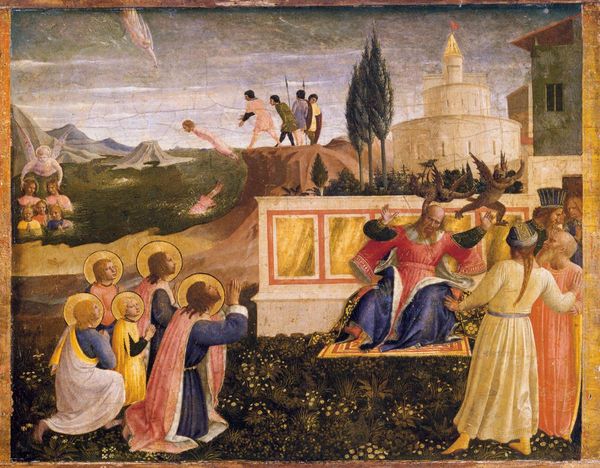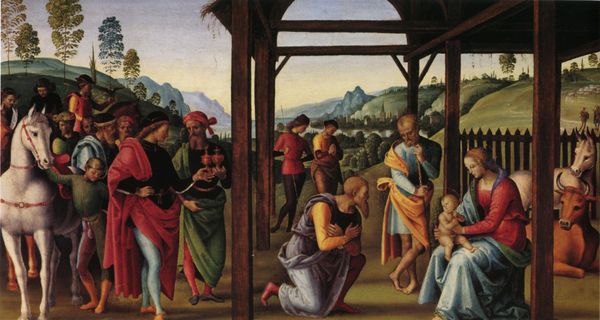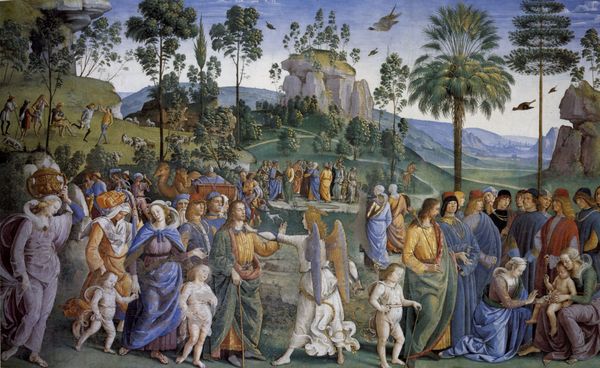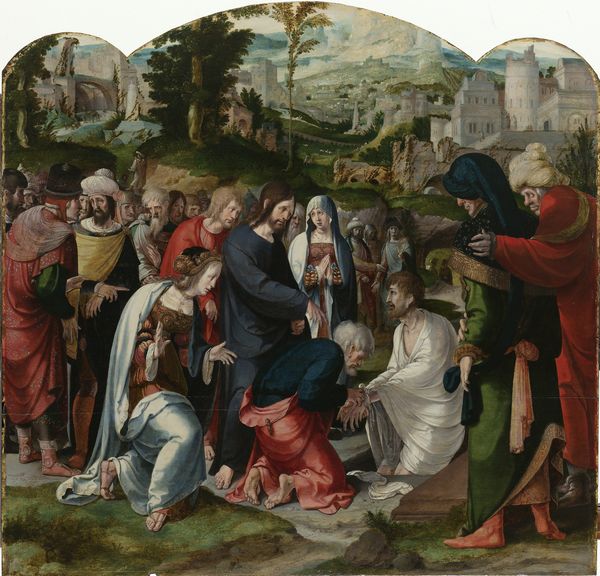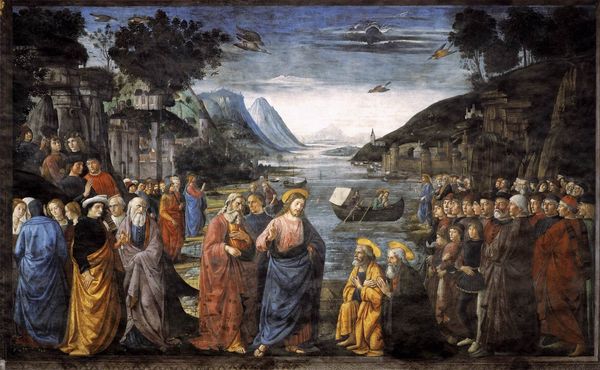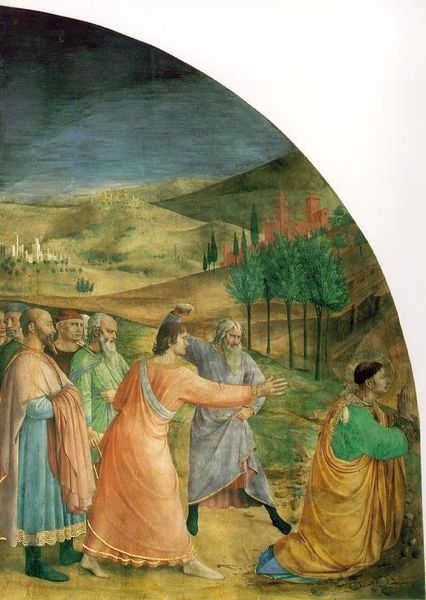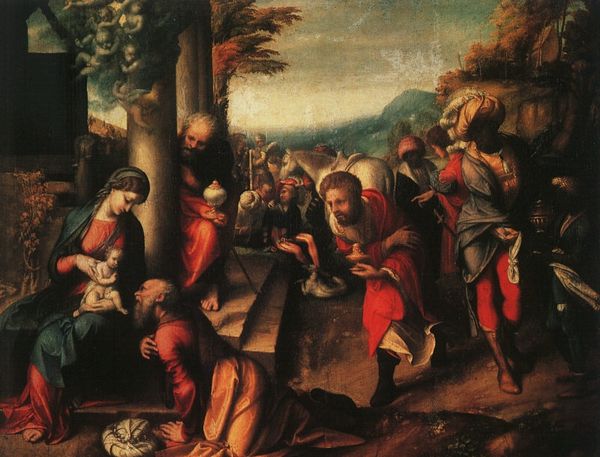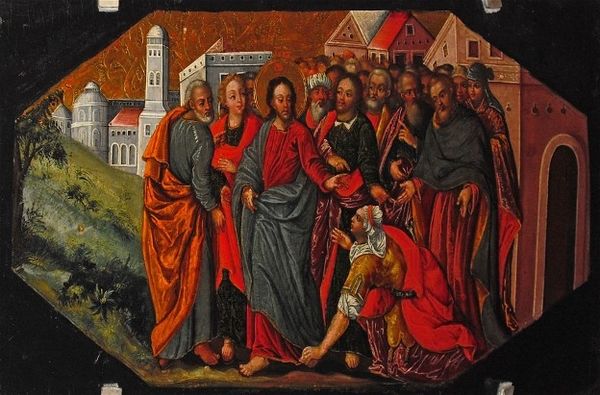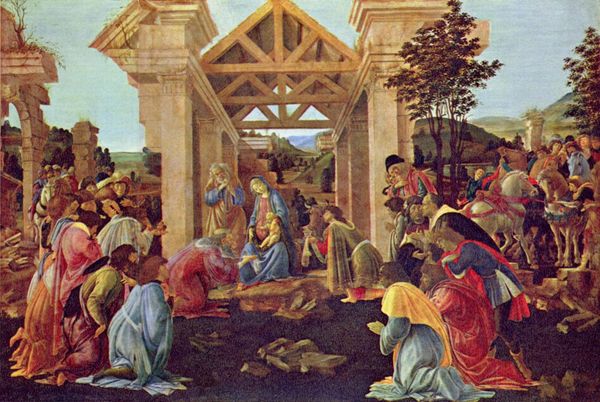
oil-paint
#
portrait
#
oil-paint
#
landscape
#
figuration
#
oil painting
#
christianity
#
history-painting
#
italian-renaissance
#
early-renaissance
#
realism
Copyright: Public domain
Curator: Painted around 1504, this is Pietro Perugino's "Pala di Sant’Agostino," also known as the "Adoration of the Magi," rendered with oil paint. What strikes you most about this piece? Editor: Initially, the sheer tranquility. The subdued color palette, almost pastel, creates a serene atmosphere despite the bustling subject matter. The balance between the figures and landscape seems meticulously calibrated to convey peace and order. Curator: Indeed. Perugino’s application of perspective, coupled with that gentle palette, emphasizes a sense of harmony reflective of Renaissance ideals. How might its location—in the Augustinian church of Sant’Agostino—have influenced the way the Adoration is presented? Editor: In such a public setting, these images weren’t just decorations. Consider, it would have been understood within a culture steeped in religious imagery. Depicting the Adoration allowed for public meditation, while the inclusion of local nobility amongst the magi could signal patronage ties and reaffirm civic pride. The political weight is crucial to how it was received. Curator: And note the structure within the composition—the geometric arrangement of the figures creates a pyramid-like shape, further highlighting the Virgin and Child as the central focus. That use of geometric shape also helps to reinforce that political weight, conveying a sense of solidity. The very symmetry imposes order upon the world it depicts, wouldn’t you agree? Editor: Absolutely. That formal structure transmits a visual language to audiences both familiar and new. The choice of the oil medium, too, with its capacity for layering, glazing, and intricate detail, would have amplified the image’s visual richness in the eyes of contemporary audiences. Its scale also indicates significance. Curator: To conclude, its clear how Perugino uses color and form to establish hierarchy while also making a claim on its historical moment, inviting its audience into this timeless narrative, no? Editor: Ultimately, understanding art means recognizing how society shapes its purpose. It gives clues to how public images play into social dynamics.
Comments
No comments
Be the first to comment and join the conversation on the ultimate creative platform.
